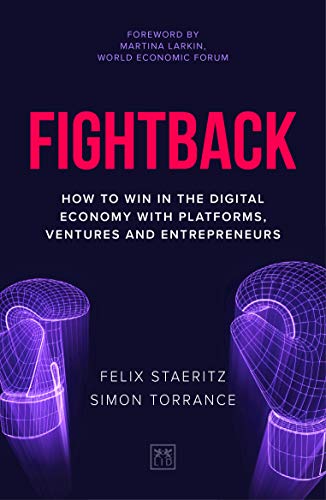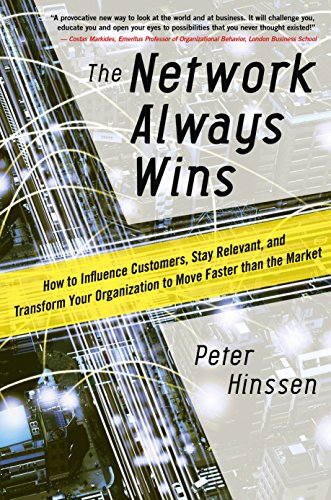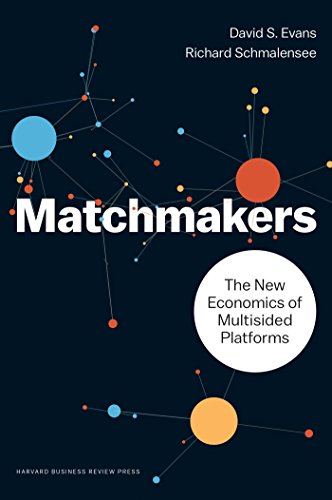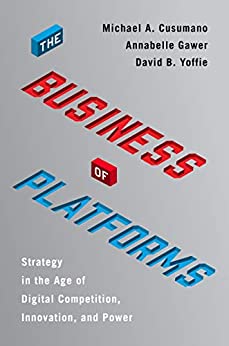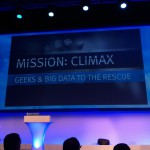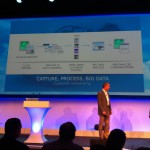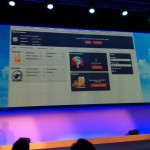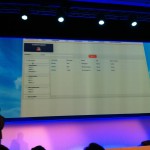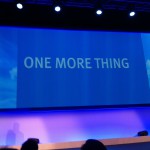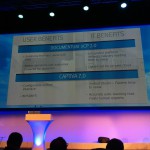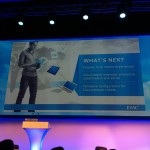EMC World 2014 and the sub conference for EMC:s Information Intelligence Group called Momemtum is hours from kicking off here in Las Vegas. In the light of last week’s announcement from Cisco that it is dropping their WebEx Social (formerly Cisco Quad) product and instead partnering with Jive Software make me want to examine this space in relation to EMC Documentum. We are all talking Enterprise Social or Enterprise 2.0 of course and when it comes to Enterprise Content Management systems that is something we like to see as a social layer on top of established technologies to store unstructured information that makes interaction and collaboration more seamless.
What is this enterprise social thing then?
I would argue that what we need is support for asynchronous or non-realtime collaboration added to the features we can offer enterprise users. However, not only offering that as some separate silo of information often run in the cloud but as an integrated solution (with an on-premise option for some of us) where we can collaborate asynchronously around documents that we already have stored in ECM-systems like EMC Documentum.
- Enterprise Social = Asynchronous collaboration = Non-realtime collaboration
Why does it matters for enterprise content management?
ECM is all about storing unstructured information in a way that provides context around it so it can be used efficiently in our business processes. That context includes metadata based on various taxonomies, security, lifecyles, workflow capabilities, alternative formats but also extracting information from the content that allows for “discovered metadata”, classification and of course search. To me Enterprise Social is just about adding an additional set of context around information based on people collaborating around it not seldom without any formalized workflow support. That context is then so helpful in providing additional perspectives or views on the information based on what people have thought if it rather than what it is actually containing.
What kind of feature are we talking about then?
The social features that we usually expect when it comes to enterprise social applications are not just the pieces of added collaborative context but also the visualization views based on those attributes which includes:
- Comments
- Sharing (links to content in ECM or general links which is social bookmarking in a sense)
- Likes
- Favorites
- Tags (ad hoc metadata)
- Tag clouds
- Status updates
- Questions/answers
- Wikis
- Blogs
- @messaging
- Private messaging (hence replacing email)
- Document collections (again based on links to ECM)
- Activity Streams (both based on social actions but also from ECM like recently uploaded documents, workflow tasks, versioned documents etc)
- Ideas and Thanks
- Related content (others have also viewed or similar content to this)
What about synchronous or real-time collaboration?
Having some kind of asynchronous collaboration features in place of course make it natural to include integration to realtime collaboration support with features like:
- Presence
- Text chat
- Audio chat (or VOIP)
- Video chat
- Desktop sharing
- Meeting rooms with text, audio, video, presentation sharing
An ability to provide a seamless integration from seeing a comment around a document from a specific user, noticing the green presence icon next to the name and seamlessly launch a text or audio chat is of course powerful an helpful instead of relying in three different applications to do the same (ECM, Social and chat).
What have EMC Doumentum done in the social area before then?
Quite a lot to be honest but also to some degree to much in terms of not having a coordinated product effort over the years. First of all eRoom was/is a product based on just that, collaboration. It provided a way to set up spaces for collaboration often used for projects. After it was bought an integration effort was made to make eRoom use the same repository technology as the rest of the Documentum stack which made a lot of sense for those wanting to eliminate the information silo. A popular feature in that also included data tables even though their social nature is not that obvious but providing “basic Excel” on a web page is a useful feature.
Second, application-based on Web Development Kit (WDK) and especially Digital Asset Manager included a fairly cool set of additions called Documentum Collaborative Services. What it did was to provide that asynchronous collaboration layer inside both the user interface and in the information model of Content Server. It included features like:
- Rooms (basically supercharged folders)
- Rich media formatted texts that appeared as “banners” on top of every folder view (could be used to explain the purpose of the folder)
- Discussion threads
- Data tables
- Calendars
After that came the first true effort to provide a modern social layer for Documentum in its Centerstage client which provided a modern AJAX-based interface with features like:
- comments
- tags
- tag clouds
- activity streams
- new way of previewing content inspired by coverflow in iTunes.
- wikis
- blogs
- discussions
In addition to that it also feature a new search capability based on Xplore and a nice facetting based on discovered metadata. From a technology standpoint so called Centerstage spaces included document libraries, discussion components which placed in a Spaces cabinet which in other clients looked like folders. Even more powerful these collaboration objects could be set up as a result from a an activity in a process.
Finally we are now in the era of the next-generation client called Documentum D2 with an even more modern architecture with configurable workspaces that can be set up differently for different groups of people. It actually includes some social capabilities like being able to view collaborative workspaces created in Centerstage but also doing comments and favorites on pieces of content. Another collaborative feature is support for annotation on/in documents which are even more enhanced if using any of the third party provided viewers that work with Documentum D2. Finally the feature which allows you to subscribe to changes to a document is back again (was available in Webtop/DAM) which actually is a powerful collaboration feature.
So there have been a fair set of collaborative features in the Documentum product over the years. The catch is however, that not all are available today in the current set of products.
What about Documentum and other provides of social platforms?
In May 2011 there was an announcement from EMC and Cisco about teaming up around social features by providing an integration between Documentum and what was then called Cisco Quad. In essence it meant being able to connect to documentum to document library sets within Cisco Quad using the CMIS interface. Cisco Quad then provided seamless integration to Cisco’s support for real-time collaboration such as WebEx Meeting and Jabber.
Around the same time it was announced that VMWare acquired the microblogging platform called Socialcast which provides an internal activity streams to customers but without features likes wikis and blogs. We have also seen a few official signs of that Socialcast technology is making its way into the platform and even seen prototypes of Socialcast-power activity streams within Documentum D2. CMS-wire have in fact publicly requested Chairman Joe Tucci to give Socialcast to the Information Intelligence Group which has been discussed again this weekend in a new article from CMS-Wire.
Finally it is worth mentioning that EMC the company is using social software from Jive Software to power its own socially-enables community called ECN which means that experience around that product is within EMC, although not necessarily in the Information Intelligence Group where Documentum belong. The hard part is to be able to both surface Documentum content in Jive and provide social interface components in D2 and xCP.
What is IBM and Alfresco doing then?
I spent last week at IBM Impact 2014 and had the opportunity of speaking with some executives around both their Enterprise Content Management software based on IBM Filenet and their collaboration software IBM Connections and IBM Sametime. They currently provide an integration between both their Content Navigator product and Case Manager where social features like comments can be made on content stored in Filenet. There is also presence and chat integration from Content Navigator to Sametime as well as a possibility to go to Sametime Meetings directly from Connections. A lot of the integration is based on CMIS but there is of course possible to use REST-integration for all these three clients. I guess that is also the interesting observation that even if the integration exists there are still three (or four if you count Case Manager) web interfaces for ECM, Social and Real-time collaboration.
Since Cisco is now abandoning WebEx Social an integration with a product like IBM Connections (and therefore also IBM Sametime) make a lot of sense if this thing with VMWare Socialcast does not plays off. All these have REST-interfaces which would make integration feasible.
I guess I have to mention Alfresco as well here since it has a tendency to surface as an alternative to Documentum and Filenet from time to time. Alfresco is sometime marketed as Social ECM and the community edition offer a basic set of social features on top of the documents. You can favorite, like and comment (without notifications) and there is an activity stream to let you see what has happened in sites you are a member of. In addition to that each site contains support for discussions, wikis, bookmarks and data lists (similar to data tables). Finally you can do “Dropbox”-like sharing of content but their integration with Desktop and mobile apps are nowhere near where EMC has come with syncplicity. A decent benchmark for social features in ECM but also not a dedicated Social interface like Socialcast, WebEx Social, Connections and Jive. Also no integration with enterprise real-time collaboration tools like WebEx, Lync and Sametime. Still Alfresco seem like things you use if you can leverage other web/cloud-based services.
![Platform Revolution: How Networked Markets Are Transforming the Economy and How to Make Them Work for You: How Networked Markets Are Transforming the Economy―and How to Make Them Work for You by [Geoffrey G. Parker, Marshall W. Van Alstyne, Sangeet Paul Choudary]](https://m.media-amazon.com/images/I/51jwAcdrKZL.jpg)
